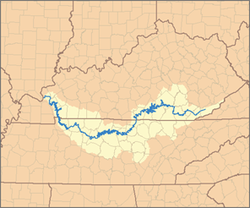This article needs additional citations for verification .(December 2025) |
This is a list of rivers of the U.S. state of Tennessee :
This article needs additional citations for verification .(December 2025) |
This is a list of rivers of the U.S. state of Tennessee :
This list is arranged by drainage basin, with respective tributaries indented under each larger stream's name. All rivers in Tennessee ultimately flow to the Gulf of Mexico.




